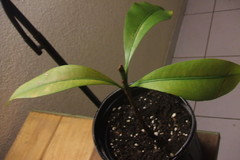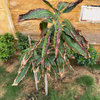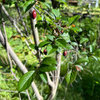Ahhh...those garcinias!
ohiojay
14 years ago
Featured Answer
Sort by:Oldest
Comments (30)
ronald123
14 years agolast modified: 9 years agomango_kush
14 years agolast modified: 9 years agojsvand5
14 years agolast modified: 9 years agoronald123
14 years agolast modified: 9 years agoohiojay
14 years agolast modified: 9 years agomurahilin
14 years agolast modified: 9 years agomango_kush
14 years agolast modified: 9 years agoohiojay
14 years agolast modified: 9 years agoronald123
14 years agolast modified: 9 years agomango_kush
14 years agolast modified: 9 years agoohiojay
14 years agolast modified: 9 years agoboson
14 years agolast modified: 9 years agoronald123
14 years agolast modified: 9 years agoohiojay
14 years agolast modified: 9 years agoboson
14 years agolast modified: 9 years agoAndrew Scott
14 years agolast modified: 9 years agojsvand5
14 years agolast modified: 9 years agoAndrew Scott
14 years agolast modified: 9 years agoohiojay
14 years agolast modified: 9 years agojsvand5
14 years agolast modified: 9 years agoberto
14 years agolast modified: 9 years agoboson
14 years agolast modified: 9 years agonighthawk0911
7 years agoparker25mv
7 years agoparker25mv
7 years agolast modified: 7 years agonighthawk0911
7 years agoparker25mv
7 years agolast modified: 7 years agonighthawk0911
7 years agoparker25mv
7 years agolast modified: 7 years ago
Related Stories

SMALL KITCHENS10 Things You Didn't Think Would Fit in a Small Kitchen
Don't assume you have to do without those windows, that island, a home office space, your prized collections or an eat-in nook
Full Story
KITCHEN DESIGNKitchen of the Week: Practical, Budget-Friendly Beauty in Dallas
One month and a $25,000 budget — see how a Texas homeowner modernized her kitchen beautifully working with those remodeling constraints
Full Story
Take it Easy: Summer Camp Style
14 Ways to Bring Home the Feel of Those Laid-Back Summer Days
Full Story
MATERIALSFabric Focus: Decorating With Touchy-Feely Velvet
Get to know the pros, cons, cost and more of this smooth, luxurious material
Full Story
LIVING ROOMSNew This Week: 2 Fresh-Looking Living Rooms
Designers share details on the soft color schemes, raw materials and durable fabrics in these relaxing rooms uploaded this week to Houzz
Full Story
CONTEMPORARY HOMESHouzz Tour: A Wine Country Home, Reinvented Once Again
Ten years after its first renovation, a 4-bedroom Northern California house gets another redo — this time with timelessness in mind
Full Story
THE ART OF ARCHITECTUREDesign Workshop: Wonderful Material Marriages
See why some materials — concrete and wood, glass and paint, brick and steel — just belong together
Full Story
KITCHEN DESIGNShow Us Your Fabulous DIY Kitchen
Did you do a great job when you did it yourself? We want to see and hear about it
Full Story
DECORATING GUIDESHow to Channel Your Inner New Bohemian
Creative and artsy, unique and layered, these looks lead to an inspiring lifestyle at home
Full Story
DESIGN PRACTICEDesign Practice: How to Pick the Right Drawing Software
Learn about 2D and 3D drawing tools, including pros, cons and pricing — and what to do if you’re on the fence
Full StorySponsored













ronald123